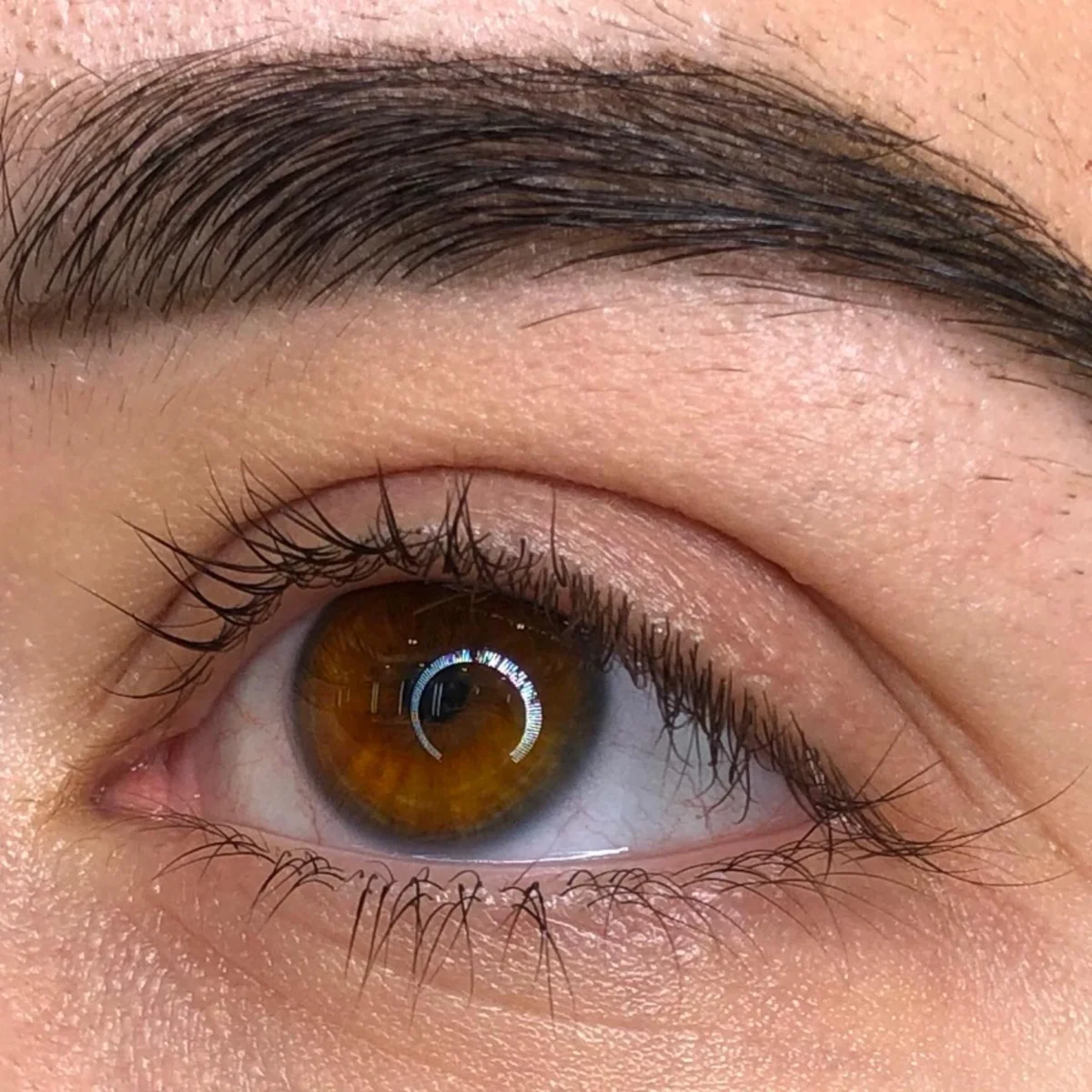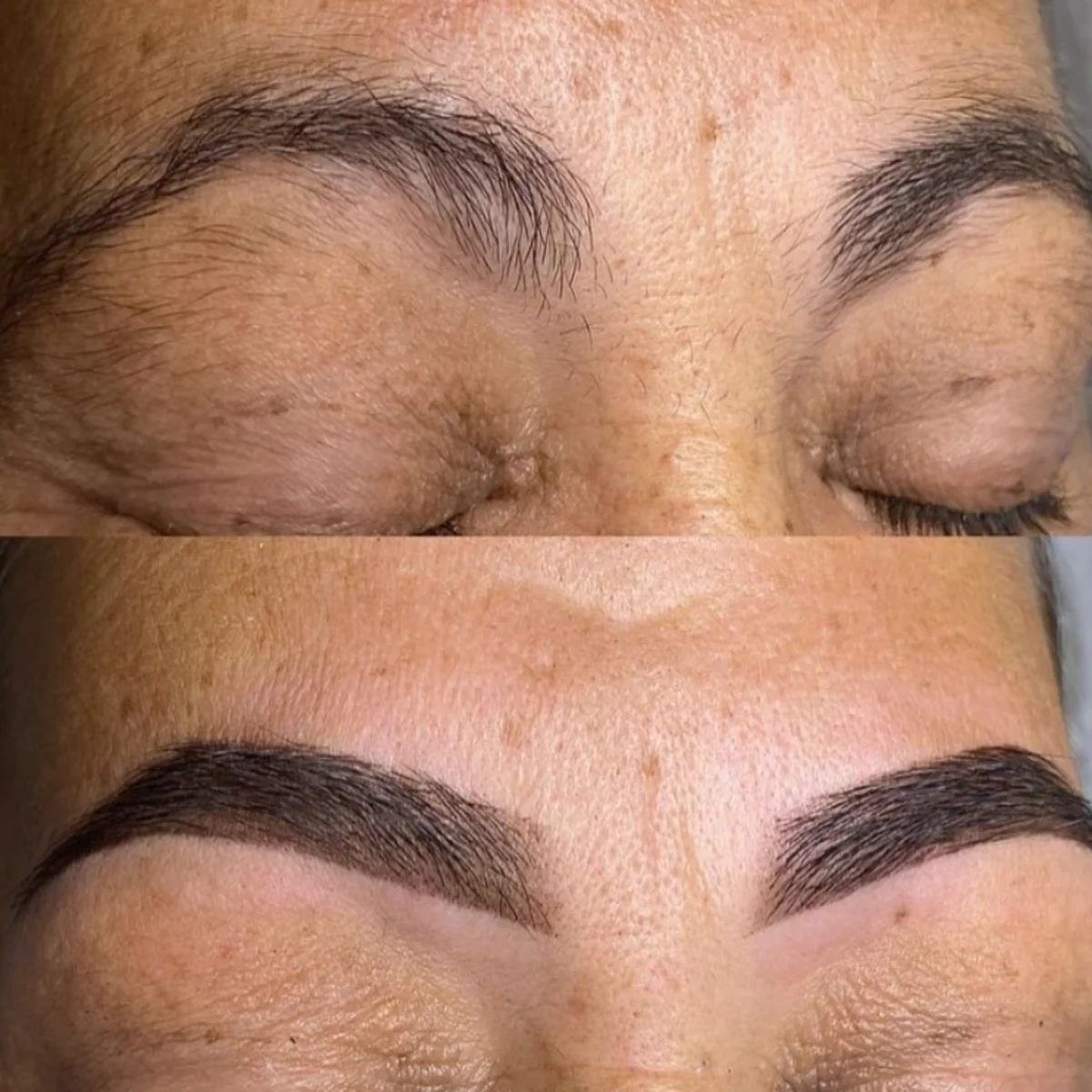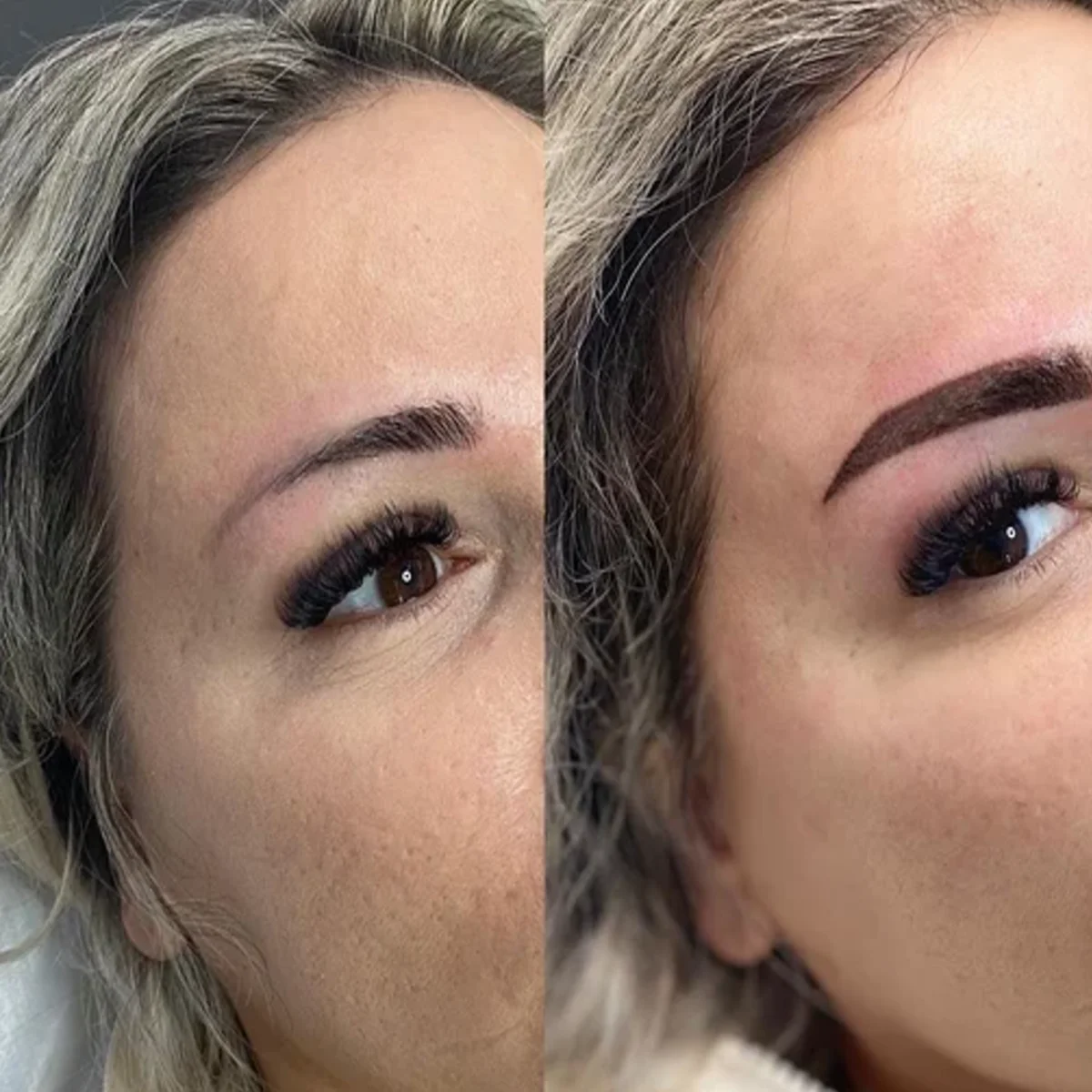Eyebrows microblading
Eyebrows play an important role in facial aesthetics and are now part of anti-aging procedures. Microblading is a new technique in permanent cosmetics for eyebrow restoration. It has become a popular treatment due to social media raising awareness. Microblading involves depositing pigment into the papillary dermis using a manual device with stacked needles to create hair-like incisions that mimic natural eyebrows. The results are semi-permanent and last 12-18 months.
Microblading has advanced in instrumentation in recent years and is now used in various cosmetic and dermatological treatments. It is a crucial tool in dermatology and cosmetic practices due to its wide range of applications. However, the popularity of microblading has also led to untrained professionals performing the procedure, increasing side effects. This article aims to guide the instrumentation, procedure, pre and post-procedure care, interaction with other aesthetic procedures, and treatment of complications related to microblading.
Introduction
Permanent cosmetics, including eyebrow enhancements, have been considered a fashion statement for a long time. Eyebrow trends change every year, from thick to thin and high-arched to low-arched. Some eyebrows cannot be shaped and need to be enhanced. This led to the popularity of permanent cosmetics, but the results often looked unnatural. In 2015, microblading or eyebrow embroidery was introduced in Asia and has since gained popularity, primarily through social media. Microblading is a form of micropigmentation where pigment is deposited in the papillary dermis using stacked needles. The procedure creates crisp, discrete strokes that simulate natural-looking eyebrows.
Microblading is a cutting-edge technique that provides cosmetic enhancement for individuals with alopecia totalis, trichotillomania, madarosis in hypothyroidism, chemotherapy-induced hypotrichosis, and other conditions.
Recent advancements in microblading have led to improvements in both instrumentation and technique. This article provides a comprehensive review of microblading, emphasizing the importance of practical training due to its artistic nature and the need for customization.
Anatomy of Eyebrows
Understanding how the anatomy of eyebrows changes with age is essential for successful microblading procedures, as knowledge of these structures and anatomical markers is crucial.
The object can be divided into four parts: head, body, arch, and tail.
The head of the eyebrow is the widest and most central part, with hair growing mostly in a vertical direction.
The body part extending from the head to the eyebrow’s arch is known as the forehead. In many cases, a hairline is also visible in this area, following the direction of the hair.
The arch is the highest point of the eyebrow, with the eyebrow tapering and narrowing towards the tail from this point.
The tail refers to the narrowing lateral end of the eyebrow, typically with feathering that points downward.
Different face structures based on factors like age, sex, and racial differences determine the ideal eyebrow shape for each individual. These shapes can range from high-arched to low-arched, S-shaped to rounded, straight, and more.
The study of facial morphology involves mapping the eyebrows.
Symmetry is important when shaping eyebrows, as it depends on factors such as hair growth, facial symmetry, and mapping brow position based on anatomical landmarks.
Some additional factors to keep in mind when shaping eyebrows include:
Before starting microblading, extra hair must be shaved off. Patients may be asked to use an eyebrow pencil beforehand if they have a specific look in mind. If there are no existing eyebrows, the starting point can be the medial pad of fat on the orbital ridge. Measurements for the eyebrow can vary depending on the width of the nose. The thickness of the eyebrow should be checked with a Vernier calliper, and it should not exceed 7 mm, with the normal thickness ranging from 4 to 7 mm.
The process of shaping and styling the eyebrows.
The highest point of the eyebrows is the arch, a key feature in female brows. A high arch is recommended for rounded faces or faces with a larger forehead. On the other hand, a flatter arch is more suitable for oval or long faces. It’s important to have a detailed discussion during the pre-procedure consultation to determine the best eyebrow shape and arch to enhance your overall look.
Instrumentation in Microblading
Various scales are used for eyebrow measurement, including the Golden Mean Brow Caliper, Vernier calliper, T-shaped eyebrow scale, and forehead taped scales.
A microblading pen is a specialized hand tool for holding the microblading needle. It has three parts: a fixed handle, a rotary regulator, and a knurled blade holder. The blade holder has a cross-shaped notch at the tip that opens to accommodate the needle. The needle can be tightened by screwing it clockwise once in place.
Pre-fitted microblading pens are available in various shapes and configurations, including lightweight, ergonomic, heavy/chunky, and double-ended options, depending on the type of needle used. Some pens are single-use and disposable.
- There are various types of microblading blades available. They consist of multiple needles arranged in a row and can be flexible, hard, or a combination. Flexi needles are good for beginners as they are more forgiving, while hard blades should be used by those confident in their skills. Blades come in different numbers, ranging from 7 to 21, with each needle being 0.4 to 0.16 mm thick. Thinner needles create finer strokes. Needles can be angled or U-shaped, with newer options including single and double-row needles for more parallel strokes.
- The multiple-needle blade works by using capillary action to pull up ink and coat the needles. The longer needles are placed where the hair root should start to deposit the most ink and create the illusion of hair. Bigger blades with more needles are used for longer strokes.
- An ink holder is a container, usually made of plastic or metal, used to store microblading ink for easy access during the procedure and to prevent cross-contamination.
Microblading Pigments
Iron oxide and synthetic are two main types of medical tattooing inks. Microblading pigments are synthetic. Unlike tattoo ink, which is dispersible, microblading pigments are non-dispersible and difficult to retain. This makes it important to use the correct technique. Most professional microblading inks are non-magnetic, organic, and do not contain heavy metals. Shade selection is usually based on skin tone, but composite inks with pre-mixed shades are also available for specific skin tones. The Indian population generally has neutral to warm skin tones.
Inks can undergo colour changes when exposed to sunlight. Iron-oxide-based inks often have a reddish hue, while synthetic inks typically become blackish-greyish.
Pre-procedure consultation
Before starting microblading, consulting with the patient about the procedure and potential outcomes is crucial. Some strokes in microblading can last permanently, so careful planning is necessary. Understand the patient’s expectations and desired eyebrow shape. Take a detailed history, including sun exposure, skin type, and other relevant factors. Discuss potential changes in colour and the need for touch-ups after 2-3 weeks. Ensure the patient is informed about post-procedure care to prevent surprises or concerns.
The pre-procedure analysis includes an assessment of skin laxity, thickness, Fitzpatrick skin type, and skin color tone. This information is used to determine the type of blade, number of pins, hardness of the blade, and the selection of the right pigment.

Anesthesia
Most procedures performed by the author use topical anesthesia cream containing lignocaine 2.5% and prilocaine 2.5%. Injectable anesthesia is rarely necessary as the microblading blade does not penetrate deeper than the papillary dermis. If injectable anesthesia is required, it should be administered with adrenaline in minimal amounts to avoid swelling and preserve the shape and post-procedure symmetry of the eyebrows.
Procedure
Aseptic precautions are followed by cleaning and preparing the eyebrows and surrounding area for the microblading procedure. All necessary instrumentation should be prepared, and the needle should be fitted into the microblading pen at a specific angle. When the pen is held upright, all needles enter the skin at a 90-degree angle.
- Skin is stretched in three opposing directions to ensure maximum stretch. The non-dominant hand stretches in two directions, while the dominant hand’s ring finger or little finger provides the stretch in the third direction.
- The pigment is placed in the ink holder, and the pen is dipped into it to absorb the appropriate amount. Any excess is removed by wiping it on the walls.
- Right-handed individuals may find it more comfortable to groom their eyebrows, starting with their right side.
- Main head strokes are performed with a pigment-dipped pen after each stroke.
- The ideal depth for microblading is the papillary dermis, which can be determined by the presence of a grating sound when making strokes, pinpoint bleeding, and the exuding of lymph shortly after.
Microblading strokes
Various types of strokes can be personalized. Head end strokes differ from tail end strokes. Practice is needed to master the direction of strokes, starting on paper and moving onto artificial skin sheets. Strokes at the head end are more vertical, while those at the tail end become more of a cross-hatching pattern.
The author distinguishes between main strokes and supporting strokes in eyebrow microblading. Main strokes start from the base and run the entire eyebrow thickness, while supporting strokes start midway and blend into the main strokes. Strokes are angled at 45 degrees to mimic the look of a hair follicle. Strokes should not be drawn parallel to each other; feathering or cross-hatching is used for a natural look. Care must be taken to avoid intersecting strokes, which can cause pigment blotching.
Post Procedure
Immediate care
After the microblading procedure, pigment is applied over the entire eyebrow and left for 5 minutes. This process helps ensure even pigment retention, as some areas may lose pigment from pinpoint bleeding.
The pigment is wiped with normal saline, and an antibiotic ointment is applied to both eyebrows.
Post-operative care
For the first 48 hours after treatment, avoid touching eyebrows, heavy exercise, or water contact. Only pat the face dry when cleaning. It is normal to experience scabs and itching for the next week, but picking them off can cause infections. Don’t use exfoliants, antiaging creams, or astringents. Avoid makeup and only wash the face with water, no soap, for the first week. Facewash can be used after 1 week. Wait 2 weeks before swimming, using steam or saunas. Avoid waxing or threading eyebrows for 6 weeks after treatment.
It is advisable to limit sun exposure and protect oneself by wearing sunglasses and applying sunscreen, as excessive sun exposure can accelerate the breakdown of pigment in the skin.
Touch up
A touch-up is recommended for all microblading cases, as some areas may lose color due to scabbing over 2-3 weeks. The touch-up procedure can be performed during this time to fill in any blank areas.



